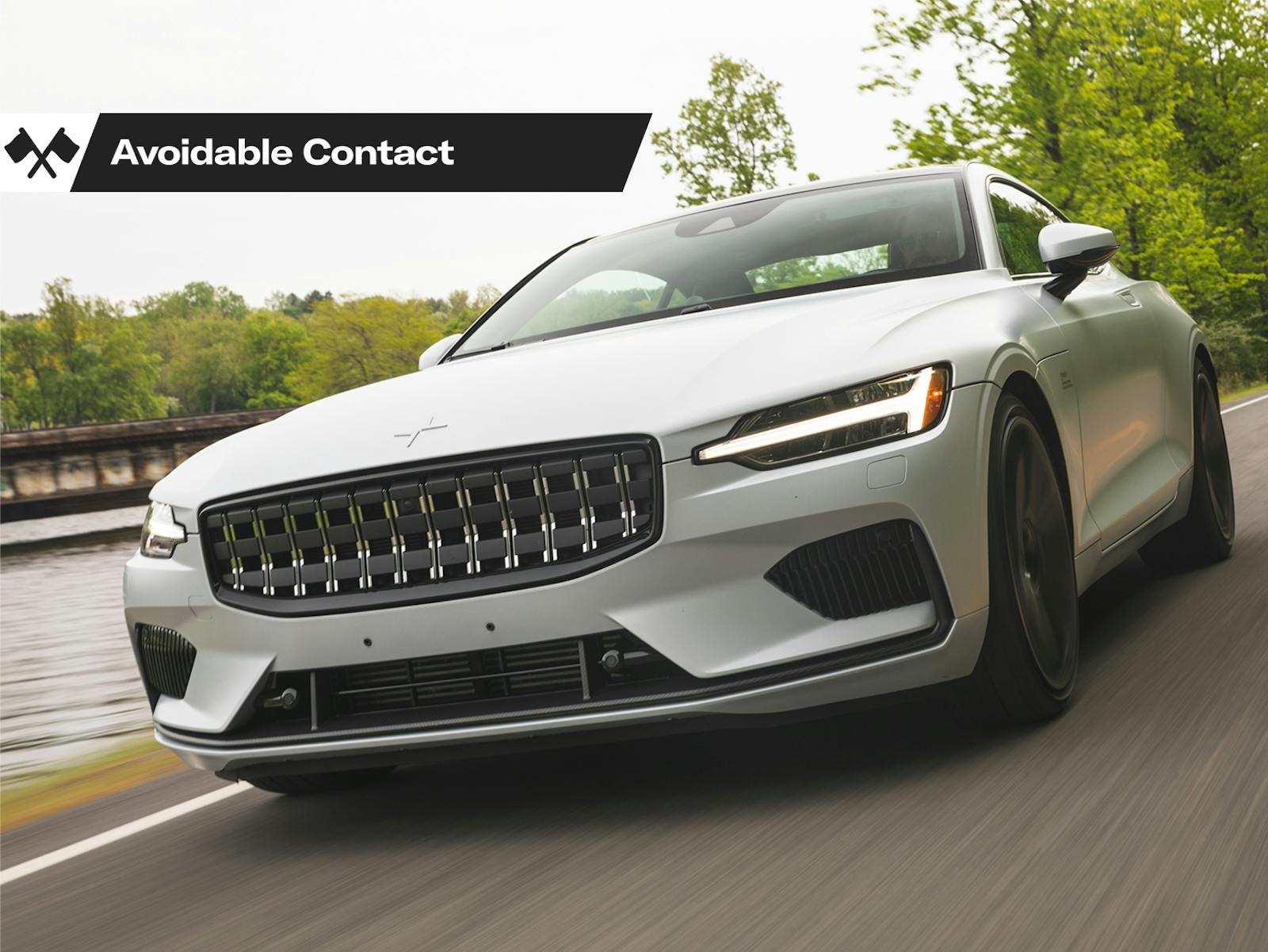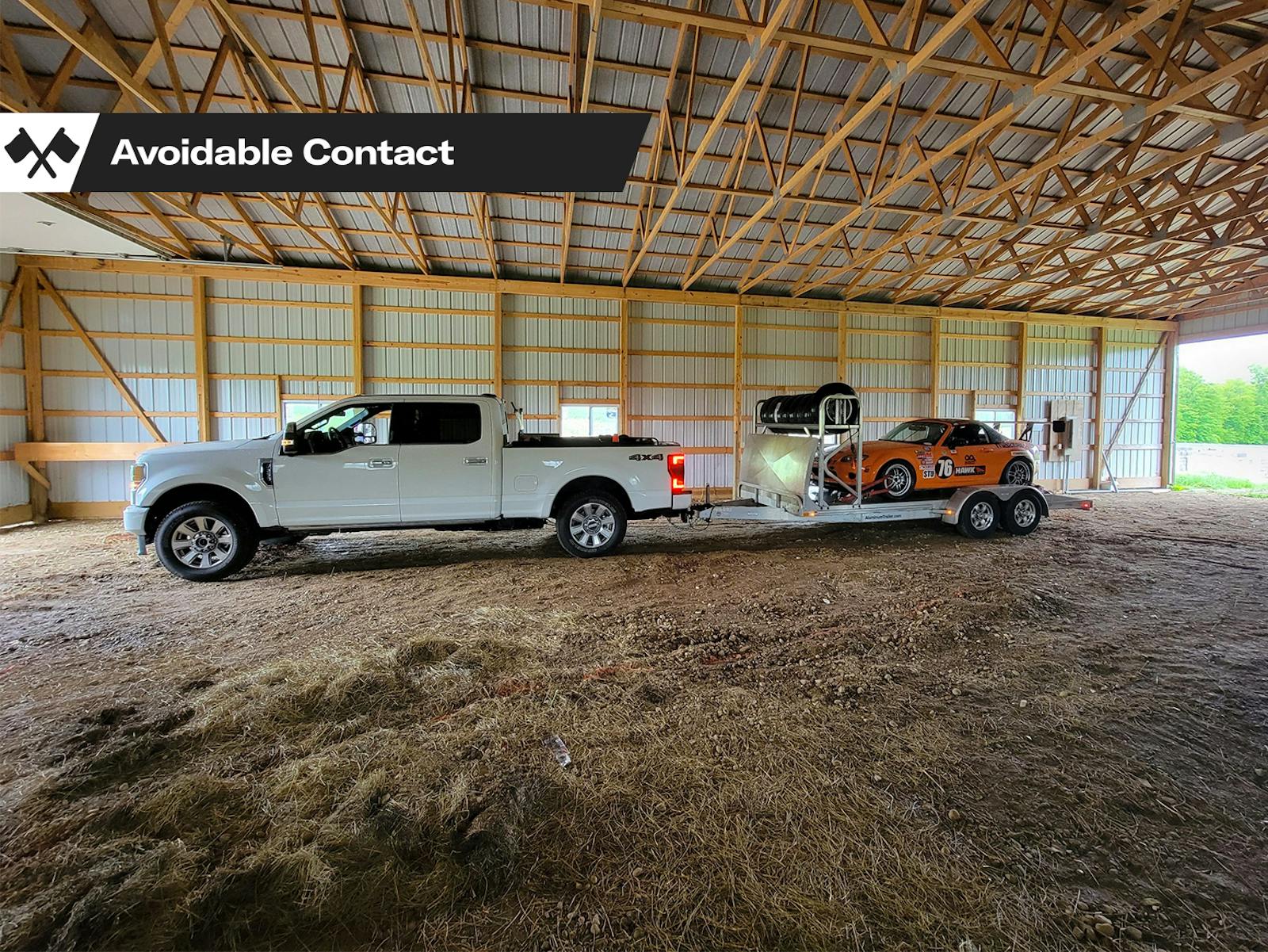Avoidable Contact #118: In which the author receives the “chauffeur fracture” and is discontented

The medical literature calls it “an oblique fracture of the radial styloid process with extension into the wrist joint,” and it first appears there courtesy of the British surgeon Jonathan Hutchinson, in 1866. Your wrist sits at the ends of two arm bones, called “radius” and “ulna.” A sudden violent movement of the hand beyond its design parameters can snap off the ends of those bones. There isn’t much in nature that can make this happen; even falling off a horse will result in a more conventional crack that runs parallel down the length of the radius bone. With the arrival of the Industrial Age, however, we started holding on to unpredictable and difficult machines, so we started breaking our wrists this way instead.
In 1904, the French surgeon Just Lucas-Championnière realized that the most common cause of radial styloid fractures was a kickback from the starting handle fitted into the nose of automobiles prior to the arrival of electric starters, and he dubbed it the “chauffeur fracture.” The fact that he immediately thought of chauffeurs, rather than normal folks trying to get their Model A started (as in 1903 Model A, not the one Jonathan Klinger drove every day for a year) is a nice example of how the automobile got a very different start in Europe. Another nice example: In Europe, the rich people had the ability to close public roads for indefinite periods of time to hold their “road races,” but in America that didn’t usually fly with the hoi polloi, so instead the races were held on oval horse tracks. That’s why NASCAR and IndyCar rule America while Formula One and various touring-car series are popular in Europe, albeit on “road courses” meant to replicate the challenges of racing on a twisty highway.
Of course, America got its own road courses eventually. One of the oldest ones still in operation is Michigan’s Waterford Hills, celebrating its 63rd year in 2021. I’d visited the facility for open lapping days a few times after the turn of the (21st!) century, but this past Saturday was my first visit there since 2008 and also my first chance to actually race on the pocket-sized 1.5-mile, eight-turn road course tucked neatly into what has become a residential neighborhood over the past four decades. For that purpose, I borrowed a Spec Racer Ford from a fellow named Alejandro Della Torre, who is in the process of assembling a very nice race series for vintage Sports Renault and “SRF” owners who don’t want to upgrade to the SCCA’s very sophisticated (and expensive) “Spec Racer Ford 3” guidelines. More about that in the weeks to come, because I think it will be of intense interest to some of you. How’d you like to run Corvette Z06 laptimes in a tight-knit pack for an entry cost that can be under 10 grand?
For now, however, sufficient unto the day is the evil thereof, and in my case the evil worked like so: I qualified fourth in an 11-car field, behind Della Torre and two other hoopy froods. At the start, I managed to sneak my way into first place, as you can see here.
Della Torre was constantly in my mirrors, and at one point he took the lead at the end of the back straight, only to have me drive around him on the outside of the Paddock Curve and steal it back. I’d been dealing with an engine cut-out in left-handers, likely due to a troublesome ignition coil, so with just four laps to go I had to yield to both Della Torre and another driver. That other driver was a young guy who had been frustrated at the relatively tame pace I’d set in the lead, so when he had a chance to get by my stumbling little sports racer he got a little too enthusiastic. You can see what happened next:
There was no chance that this young pup, whom I won’t name here, was going to make that turn. He’s got outside-line speed and inside-line position. Oh, well. These things happen. If he’d kept his foot on the brakes, I would have been able to stay on the pavement and hold on to the position behind Della Torre. Instead, he went feet-up and basically rolled into me. The hit doesn’t look that bad on video, but it bent my little Spec Racer and destroyed its nose.
Oh, and the sudden motion of the small-diameter steering wheel when we collided forced my left wrist back at high speed, giving me Ye Olde Chauffeur Fracture. Even though the only person I was chauffeuring was … me. Thankfully I long ago stopped leaving my thumb inside the steering wheel, or the injury would have been far more serious. I knew my wrist was broken even as I was coming back on track—I suffered similar injuries a half-dozen times during my profoundly disappointing BMX racing career—but I also knew that there were just a few laps to go in the race, so I held on to finish fourth overall. About the most exciting and painful way I can think of to finish the race in my qualifying position.
In hindsight, I was far too trusting of someone I’d just seen make a very low-percentage move; I should have cut speed and gone off the track immediately. Doing so probably would have ended my race and damaged the car a little bit, but I’d be typing this column with both hands, and that would be nice. After years of running with the cream of the SCCA crop in the Ohio Valley Region, however, I was operating on the assumption that he’d control the spin, I’d skim him, and I’d finish on the podium. He didn’t, I didn’t, and I didn’t.
Sunday, while I was sitting at home burying my wrist in a bucket of ice like Miles Teller in “Whiplash,” the young driver caused another incident while attempting another unlikely-to-succeed move. This time it was Della Torre who took the hit and finished fourth. Which leads to a question: How do you solve a problem like Maria? The vast majority of wheel-to-wheel racing nowadays is done in the enduro sanctions (LeMons, Chump/Champ, AER, LuckyDog, et al), and they’d have sat the driver down after the first crash, likely putting him on probation after the second. The current belle of the ball in sprint racing is GridLife’s GLTC, which is an explicitly no-contact sanction. They wouldn’t stand for it. The race director in my home for-profit amateur racing region once tried to pull my license for having three mild contact incidents in a weekend, none of which dented a panel and two of which were directly related to people passing me under yellow and/or sleepwalking on a race restart. I think they’d do something similar to this driver, especially if he wasn’t the spouse of a series director.
On the other hand, you have all of those circle-track sanctions that arose from our oval-horse-racing American past. They are loath to penalize for contact. I did an ARCA race once where I stopped counting the teeth-jarring hits after perhaps the 10th one and I didn’t see anyone so much as talking to a steward after the race. Sometimes you’ll get fistfights in the paddock, but that’s it. Rubbing, as they say, is racing in the real America, whatever that is.
This weekend’s event wasn’t run by SCCA, NASA, ARCA, or any other national sanction; it was part of Waterford Hills’ own WHRRI series. I didn’t protest and neither did Della Torre, so there was no penalty. Everybody will rebuild their cars, heal their fractures, and come back for more. Truthfully, that’s how I prefer it, even though I came out of it worse than anyone else in terms of both wrist and wallet. I know there are a lot of drivers out there, particularly in the generations after mine, who are trying very hard to make racing an essentially risk-free activity. Their efforts, combined with the predatory behavior of various attorneys, have done a lot to decrease the danger, and increase the hassle, of club racing. If you buy someone’s three-year-old race car nowadays, you can expect that you’ll be replacing the belts, the window nets, the fire system, the fuel cell, the seat … even though all of this stuff is just fine. But those are the rules now, because there’s a tiny chance that someone’s two-year-old seatbelt might somehow be “expired.”
That aversion to danger, and the changes made in the rules as a result, have also given us a lot of really crummy club racers lately. They leave half a door open all the time, knowing that if you make a move on them you’ll likely be penalized for doing so. They ignore their mirrors and move around at the entrance of a turn until they hear a THUMP, then they whine to the stewards about it after the fact. Having spent years in Highly Profitable Driver Exploitation, excuse me, High Performance Driver Education, they have been trained to stare at their cellphone lap timer for long seconds at a time while ignoring flaggers, debris, and stopped cars on the track ahead. Most of them hate dicing for position and would prefer to win the race via pre-event prep and/or check-writing, which is why so many modern club-level races wind up as strung-out recapitulations of qualifying and are thus essentially indistinguishable from time trials.
No doubt this attitude will cost me more than a broken wrist in the decades to come, but I disagree with all of the above. I don’t think racing should be made deliberately dangerous; those figure-8 races that pack the stands in small towns are too hot even for me. But I do think that too much risk mitigation renders racing a shadow of its true self and eliminates the attraction for both competitors and spectators.
So this kid broke my car and my wrist doing something stupid. At least he had the guts to get out there and try his hardest to make something happen. I’d rather see a lot of brave young drivers make mistakes than parade around in a time trial. How’s the old saying go? “A race car in a no-contact series is safe, but that’s not what race cars are for.” In this thing, and in all things, let us choose the bold over the bashful, the competitive over the curtailed, the risk over the reduction of same. Now, if you’ll excuse me, I have to figure out how to duct-tape a soft cast to the steering wheel of a Radical PR6. See you next time, out there and in here, too.

